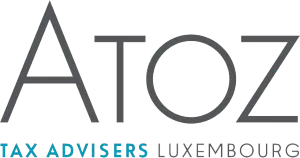- within Technology and Finance and Banking topic(s)
- with readers working within the Technology industries
On 12 September, the EU Commission adopted a key package of initiatives containing notably a Directive Proposal on Business in Europe: Framework for Income Taxation ("BEFIT"). BEFIT is one of the initiatives announced by the European Commission in its May 2021 communication on Business Taxation for the 21st Century and aims to "introduce a common set of rules for EU companies to calculate their taxable base while ensuring a more effective allocation of profits between EU countries, based on a formula".
The Directive Proposal on BEFIT replaces and thus repeals the EU Commission's proposal for a common corporate tax base ("CCTB") and the proposal for a common consolidated corporate tax base ("CCCTB") that have never reached consensus.
In this article, we will analyse the Directive Proposal on BEFIT and comment on its implications.
BEFIT scope
The Directive Proposal on BEFIT establishes a common set of rules to determine the tax base of companies subject to corporate income taxation in a Member State that are part of groups which prepare consolidated financial statements.
The BEFIT rules would be mandatory:
- for companies1 resident for tax purposes2 in a Member State, including their permanent establishments3 located in other Member States, and
- for permanent establishments4 located in Member States of entities resident for tax purposes in a third country ("third-country entities"),
if they belong to a domestic group or to a multinational enterprise group ("MNE group") which prepares consolidated financial statements5 and had annual combined revenues of EUR 750 million or more in at least two of the last four fiscal years. In addition, the ultimate parent entity ("UPE") of the group shall hold at least 75% of the ownership rights or of the rights giving entitlement to profit of the in-scope entities.
While the mandatory scope of BEFIT comprises similar groups to Pillar 2 (i.e. groups with annual combined revenues of at least EUR 750 million), it would be limited to the so-called "BEFIT group members" (i.e. the EU sub-set group of entities that meets a 75% ownership threshold, assessed on a yearly basis).
The Directive Proposal on BEFIT provides specific rules for the computation of the EUR 750 million threshold in the case of M&A transactions or if one or more of the four fiscal years referred to is longer or shorter than 12 months.
This Directive Proposal on BEFIT shall not apply to companies or permanent establishments with a UPE outside the EU where the combined revenues of the group in the EU either do not exceed 5% of the total revenues for the group based on its consolidated financial statements or the amount of EUR 50 million in at least two of the last four fiscal years. Non-EU MNE groups having limited anchorage in the EU are thus out of scope of the Directive Proposal on BEFIT.
The BEFIT rules will be discretionary for smaller groups or companies or permanent establishments with a UPE outside the EU which are out of the mandatory scope of application, which may choose to opt in as long as they prepare consolidated financial statements.
The Directive Proposal on BEFIT does not contain sector-specific exclusions from its scope. However, as the BEFIT proposal only targets entities that are subject to corporate tax, referring to corporate income tax as far as Luxembourg is concerned, we can already conclude that Luxembourg investment funds subject to subscription tax will be out of the scope of BEFIT (but could be in the scope of Pillar 2).
BEFIT mechanism
COMPUTATION OF BEFIT GROUP MEMBERS' TAX BASES IN ACCORDANCE WITH A COMMON SET OF RULES.
Under the Directive Proposal on BEFIT, BEFIT group members would need to calculate their tax base in accordance with a common set of rules. Like in Pillar 2, the starting point will be the accounting result from the financial accounts, which must be determined under one single accounting standard for the BEFIT group. To this aim, the financial accounts of each BEFIT group member will have to be reconciled, in principle, with the accounting standard of the UPE.
For simplification purposes, adjustments under BEFIT would be kept to a minimum, rather than putting together a detailed corporate tax framework. In case they are deducted or not already recorded in the financial accounting statements, BEFIT adjustments would require the following items to be added back:
- financial assets held for trading;
- borrowing costs that are paid to parties outside the BEFIT group in excess of the interest limitation rule of the ATAD;
- fair value adjustments and capital gains received by life insurance undertakings in the context of unit-linked/index-linked contracts;
- fines, penalties and illegal payments such as bribes; and
- corporate taxes that were already paid or top-up taxes in application of Pillar 2.
On the contrary, the following elements would be subtracted from the financial net income or loss if they are in the financial accounts:
- dividends and capital gains or losses on shares or ownership interests, in the case of significant ownership (at least 10% of the profits, capital, reserves or voting rights and held for more than one year) and unless they are held for trading or by a life insurance undertaking;
- the profit or losses from permanent establishments;
- shipping income subject to a national tonnage tax regime;
- rollover relief for gains on assets that are replaced;
- acquisition, construction and improvement costs of depreciable assets, because these costs will already be part of the depreciation base, as well as subsidies directly linked to this, because subsidies should neither be in the depreciation nor tax base;
- unrealised gains or losses from currency exchange fluctuations on fixed assets;
- any amount relating to the post-allocation adjustments listed by the Directive proposal on BEFIT; and
- fixed tangible assets valued below EUR 5 000 (to be excluded in the fiscal year of acquisition only).
Hence, BEFIT would require fewer and different tax adjustments (i.e. dividends and capital gains exclusion) than Pillar 2 which has a different purpose, namely to calculate the appropriate qualifying income when determining the level of tax due. The scope of the exclusion for dividends and capital gains under BEFIT is also different to the Luxembourg participation exemption.
The Directive Proposal also provides for BEFIT tax depreciation rules for fixed assets and so-called "Timing and Quantification rules" in order to avoid abuses (e.g. provisions are excluded if they are not legally required or cannot be reliably estimated; bad debts can only be deducted under certain conditions and never if the debtor is an associated enterprise; the treatment of hedging instruments must follow the tax treatment of the hedged item).
Finally, the Directive Proposal includes rules that would apply in case of entities entering or leaving the BEFIT group and business reorganisations (to clarify for example that the Merger Directive takes precedence).
There is also an anti-abuse rule that would ensure that capital gains on assets are included in the preliminary tax result when the assets are moved within the group, without tax implications, to a group member which is then sold out of the group. This would normally benefit from a tax exemption for share disposals but would not be allowed under BEFIT, unless it can be justified from a commercial perspective.
AGGREGATION OF THE BEFIT GROUP MEMBERS' TAX BASES INTO ONE SINGLE TAX BASE.
The preliminary tax results of all BEFIT group members will be aggregated into a single "pool" at EU group level, which will be the "BEFIT tax base".
Click here to continue reading . . .
Footnotes
1. Taking one of the forms listed in Annex I: companies under Luxembourgish law known as 'société anonyme', 'société en commandite par actions', 'société à responsabilité limitée', 'société coopérative', 'société coopérative organisée comme une société anonyme', 'association d'assurances mutuelles', 'association d'épargne-pension', 'entreprise de nature commerciale, industrielle ou minière de l'Etat, des communes, des syndicats de communes, des établissements publics et des autres personnes morales de droit public', and other companies constituted under Luxembourg law subject to Luxembourg corporate tax.
2. It means that they are subject to one of the corporate taxes listed in Annex II, or to a similar tax subsequently introduced - "impôt sur le revenu des collectivités" in Luxembourg.
3. When they are subject to one of the corporate taxes listed in Annex II or to a similar tax subsequently introduced - "impôt sur le revenu des collectivités" in Luxembourg.
4. When they are subject to one of the corporate taxes listed in Annex II or to a similar tax subsequently introduced - "impôt sur le revenu des collectivités" in Luxembourg.
5. In respect of companies, they are the ultimate parent entity ("UPE") or their assets, liabilities, income, expenses, and cash flows shall be consolidated on a line-by-line basis by the UPE. In respect of permanent establishments, they are a permanent establishment of the UPE or of an entity whose assets, liabilities, income, expenses and cash flows shall be consolidated on a line-by-line basis by the UPE.
The content of this article is intended to provide a general guide to the subject matter. Specialist advice should be sought about your specific circumstances.
[View Source]


